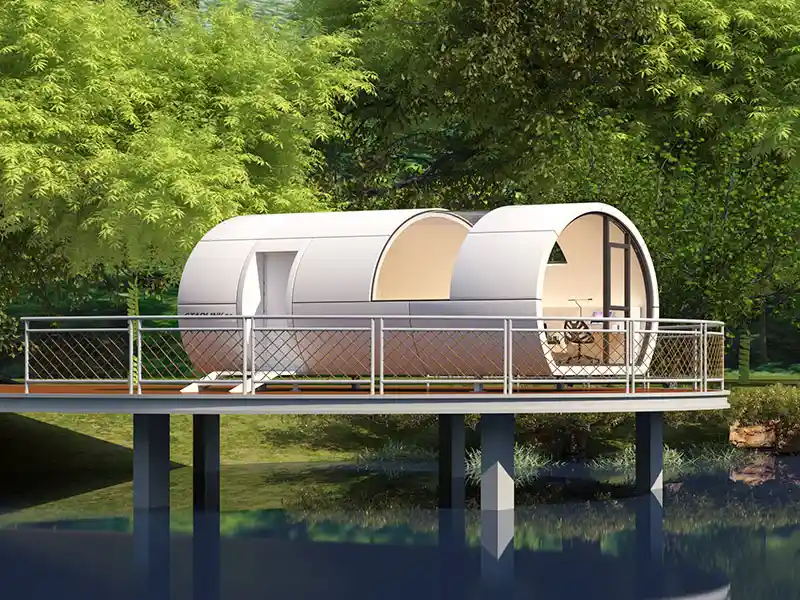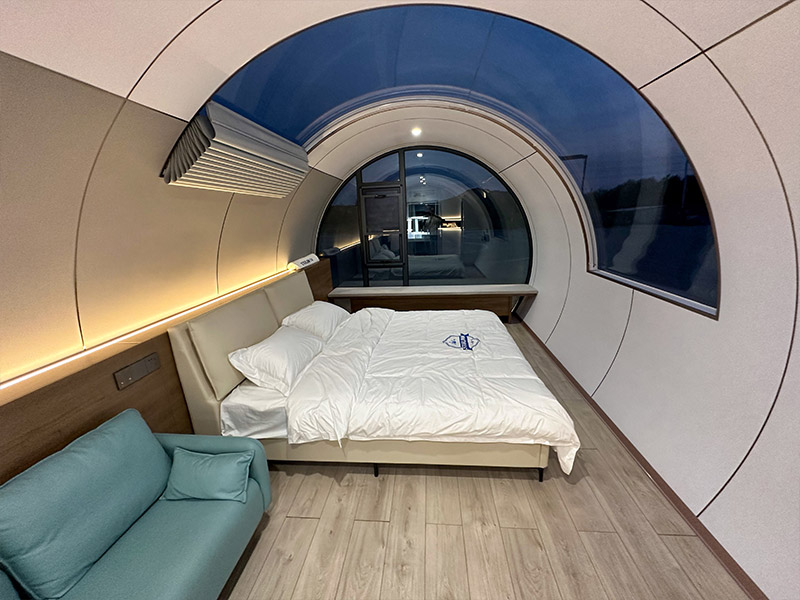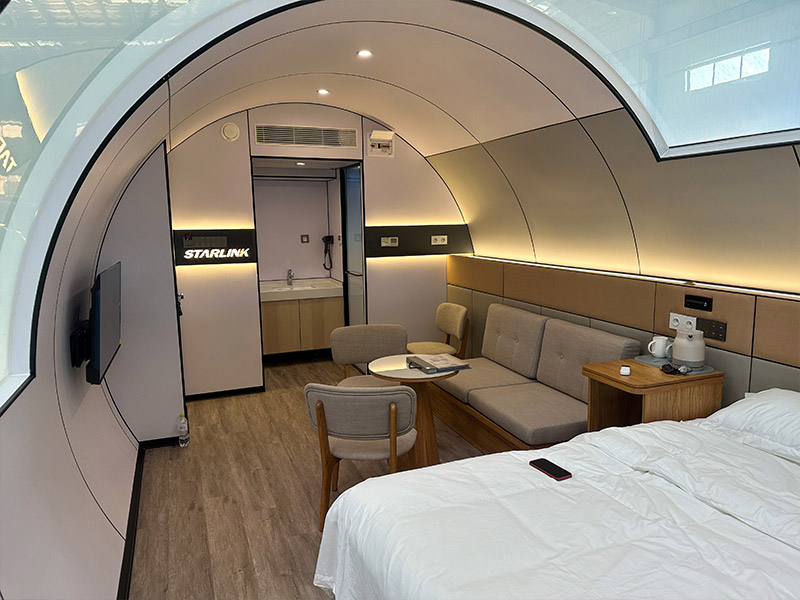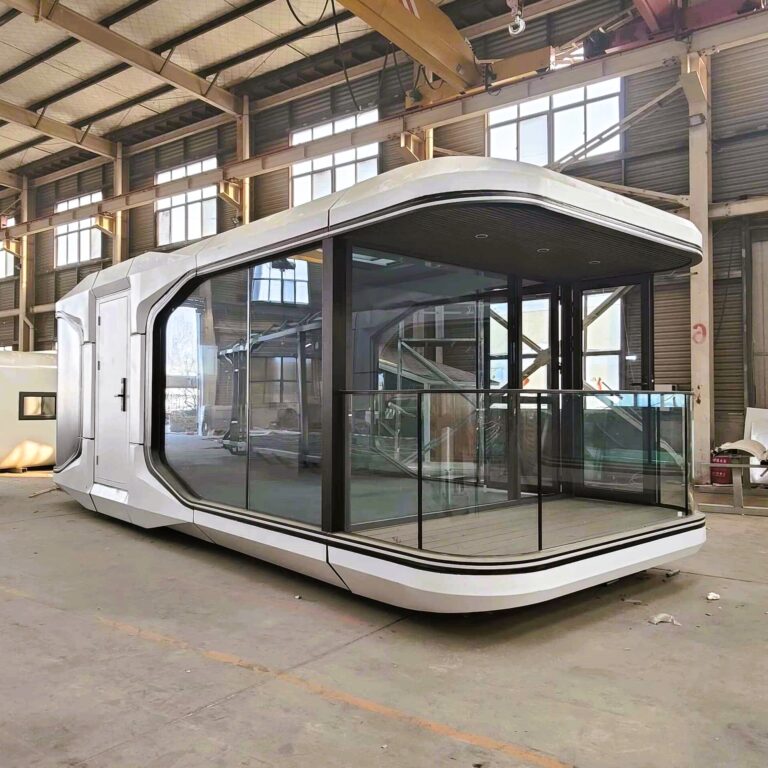Table of Contents
1. The Squeeze is Real: Why Tiny?
Urbanization is crushing us. By 2050, 68% of humanity will live in cities (UN Habitat). Cue the housing crisis:
- Millennials: 72% prioritize experiences over square footage (Forbes).
- Developers: Land costs up 300% in 10 years (McKinsey).
- Planet Earth: Buildings = 39% of global CO2 (World GBC).
Enter Capsule Tiny Houses: Not just small—strategically compact. Starlink Building’s Space Capsule House PRO A7 packs a queen bed, full bath, and kitchen into 408 sq ft. That’s 40% cheaper per unit than traditional builds.

2. Design Alchemy: Small Footprint, Big Genius
Modular Capsule Houses aren’t shoeboxes—they’re spatial ninjas. Starlink’s secret sauce:
- Vertical Stacking: Loft beds over living areas (see Capsule Tiny House Mini Q5).
- Fold-Tech: Walls that pivot, tables that vanish.
- Smart Skin: Triple-glazed windows + aerogel insulation (-30°C proof).
Real Talk: A Swiss ski lodge used Starlink’s Apple Cabin C5 (236 sq ft) as luxury staff housing. Result: 20 units deployed in 45 days, $2M saved vs. concrete cabins.
3. The ROI Unicorn: Tourism & Hospitality
Pop-up hotels = money printers. Capsule clusters solve 3 nightmares:
- Zoning Hell: Classified as “temporary structures” (avoiding permits).
- Speed Wins: 30-day factory build vs. 18-month construction.
- Instagram Bait: Curved walls, LED mood lighting = viral check-ins.
| Model | Units per Acre | Avg. Nightly Rate | Payback Period |
|---|---|---|---|
| Traditional Cabin | 8 | $150 | 5.2 years |
| Space Capsule House A5 | 22 | $220 | 1.8 years |
Data: Glamping Hub 2023 Report

4. Customization: Your Brand, Your Box
Starlink’s OEM/ODM service turns capsules into chameleons. Examples:
- Med Capsules: Mobile clinics with UV sterilizers (used in Philippine typhoon response).
- Eco-Retreats: Solar-powered Apple Cabins for Costa Rican rainforests.
- Micro-Cafés: Barista pods with fold-out counters (Berlin pop-up, €15K/day revenue).
Pro Tip: Their Capsule House Plus A6 fits a full-size kitchen—chefs love it for farm-to-table resorts.
5. Durability Smackdown: “Fluffy” They Ain’t
Forget “tiny = fragile.” Starlink builds Space Capsule Houses like tanks:
- Frame: Galvanized steel skeleton (150 mph wind rating).
- Skin: FRP composites (fire-resistant, salt-air immune).
- Foundation: Screw piles—install on sand, swamp, or slope.
Case Study: A Dubai desert camp survived a 2023 sandstorm. Traditional tents? Shredded. Capsule units? Zero damage. Insurance claims dropped 90%.
6. Green Cred: Small is the New LEED
Sustainability isn’t optional—it’s profit. Capsule tiny houses deliver:
- Energy Use: 62% less HVAC demand (US DoE).
- Materials: 5-ton steel frame vs. 50-ton brick home.
- Endgame: 94% recyclable when decommissioned.
Starlink’s secret? ”Cradle-to-cradle” manufacturing: Offcuts become park benches. Solar roof ports standard.
7. The Future: Capsule Clusters & Smart Pods
2025 Trend Alert:
- Capsule Condos: Stackable units for urban infill (Miami pilot: 80 units/acre).
- AI Integration: Starlink’s PRO series has voice-controlled lighting/security.
- Nomad Hubs: Capsule Tiny House Mini Q5 + co-working space + gym pods.
Billion-Dollar Play: BlackRock invested $200M in modular housing startups in 2023. Why? Scalability.

Conclusion
Capsule tiny houses aren’t a fad—they’re antidotes to broken systems. Starlink Building Technology nails it:
- Speed: 30-day dock-to-site delivery.
- Savings: 50% lower CAPEX than brick-and-mortar.
- Swagger: Design that stops scrolls (and draws deposits).
Final Wisdom:
“The best things come in small packages—especially when they ship flat-pack.” — Starlink client, Bali eco-resort.
Ready to scale your project?
Explore Starlink’s turnkey kits: Space Capsule House Collection
OEM dreams? Chat with their engineers: Custom Solutions Hub



